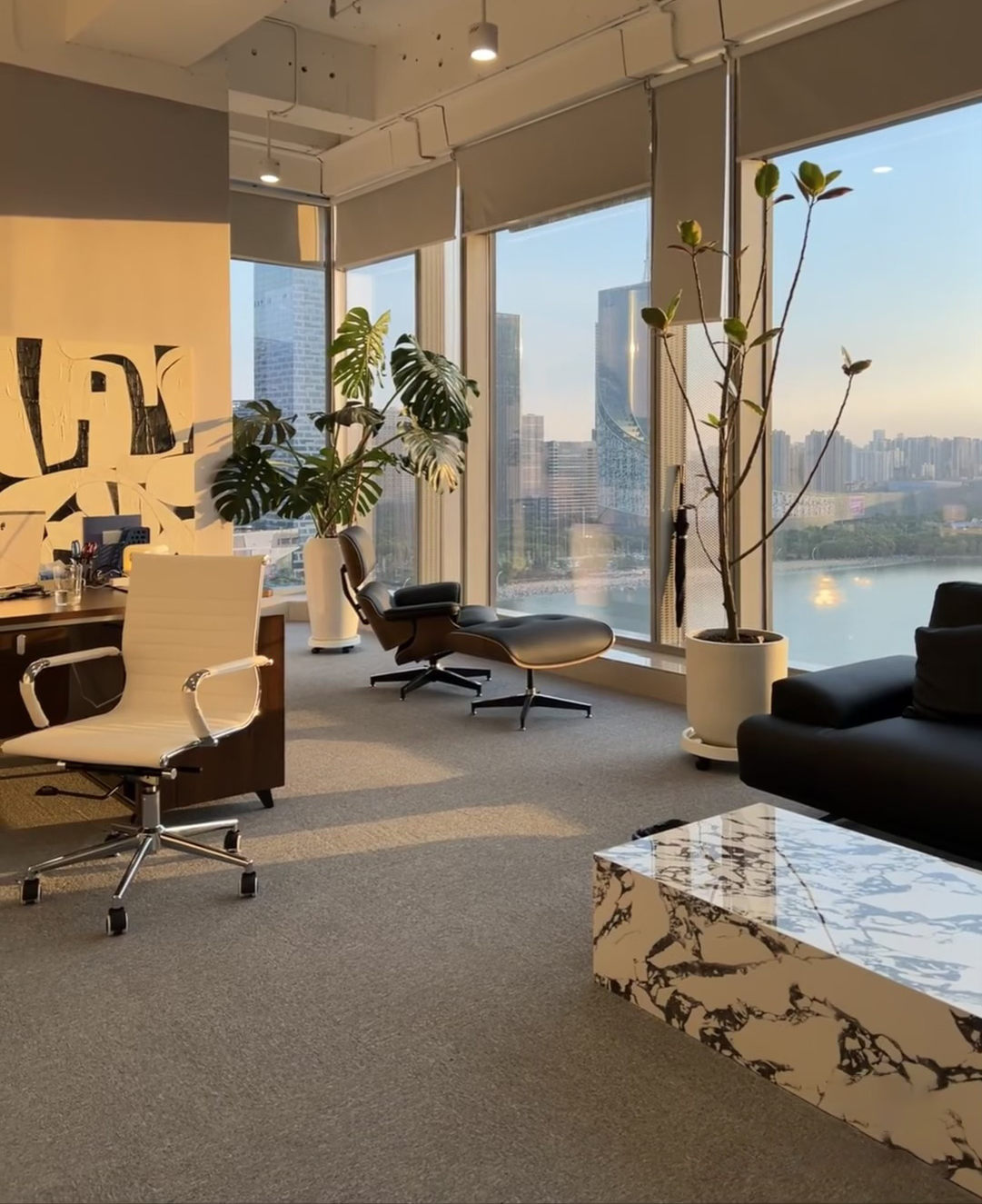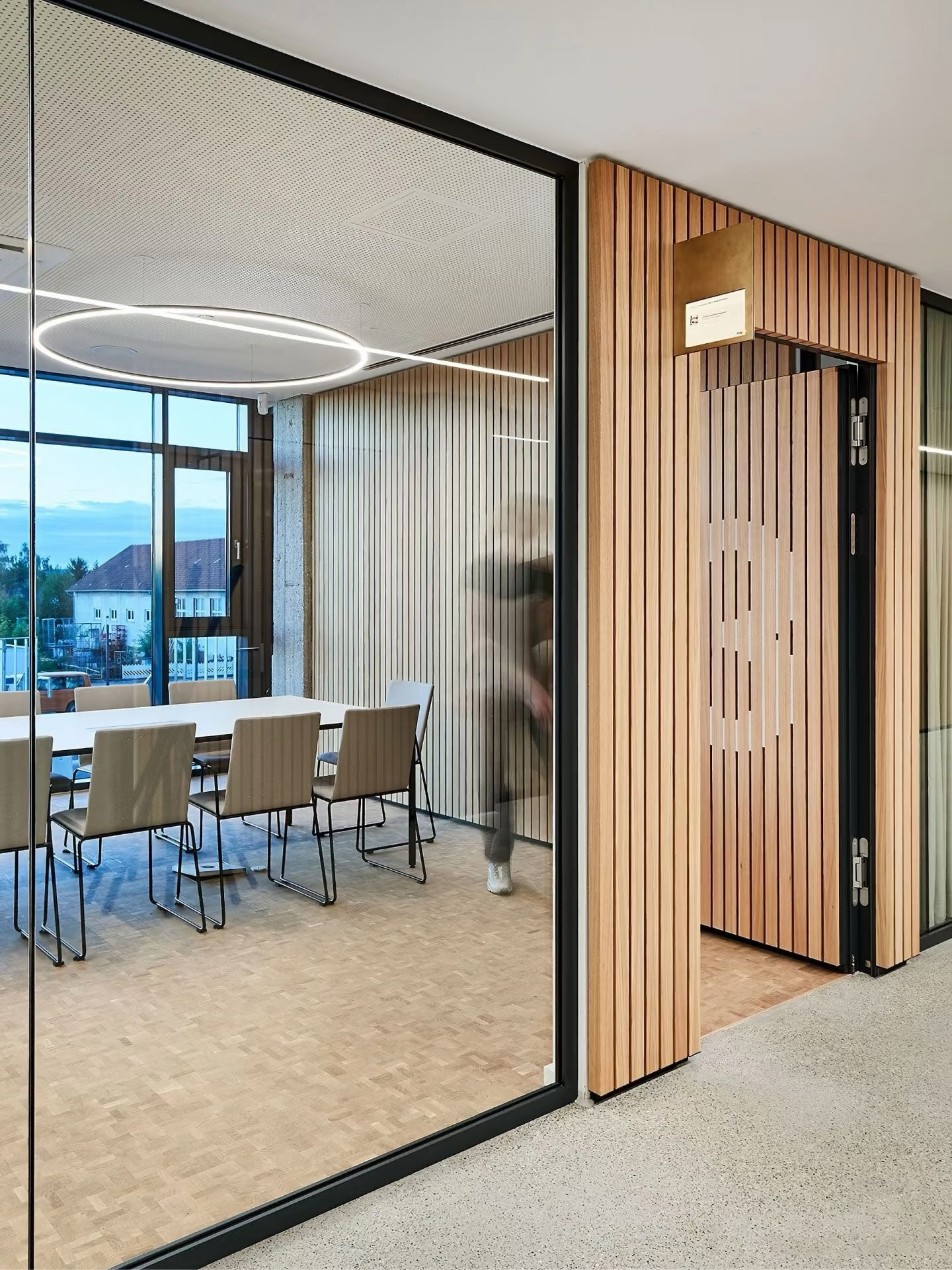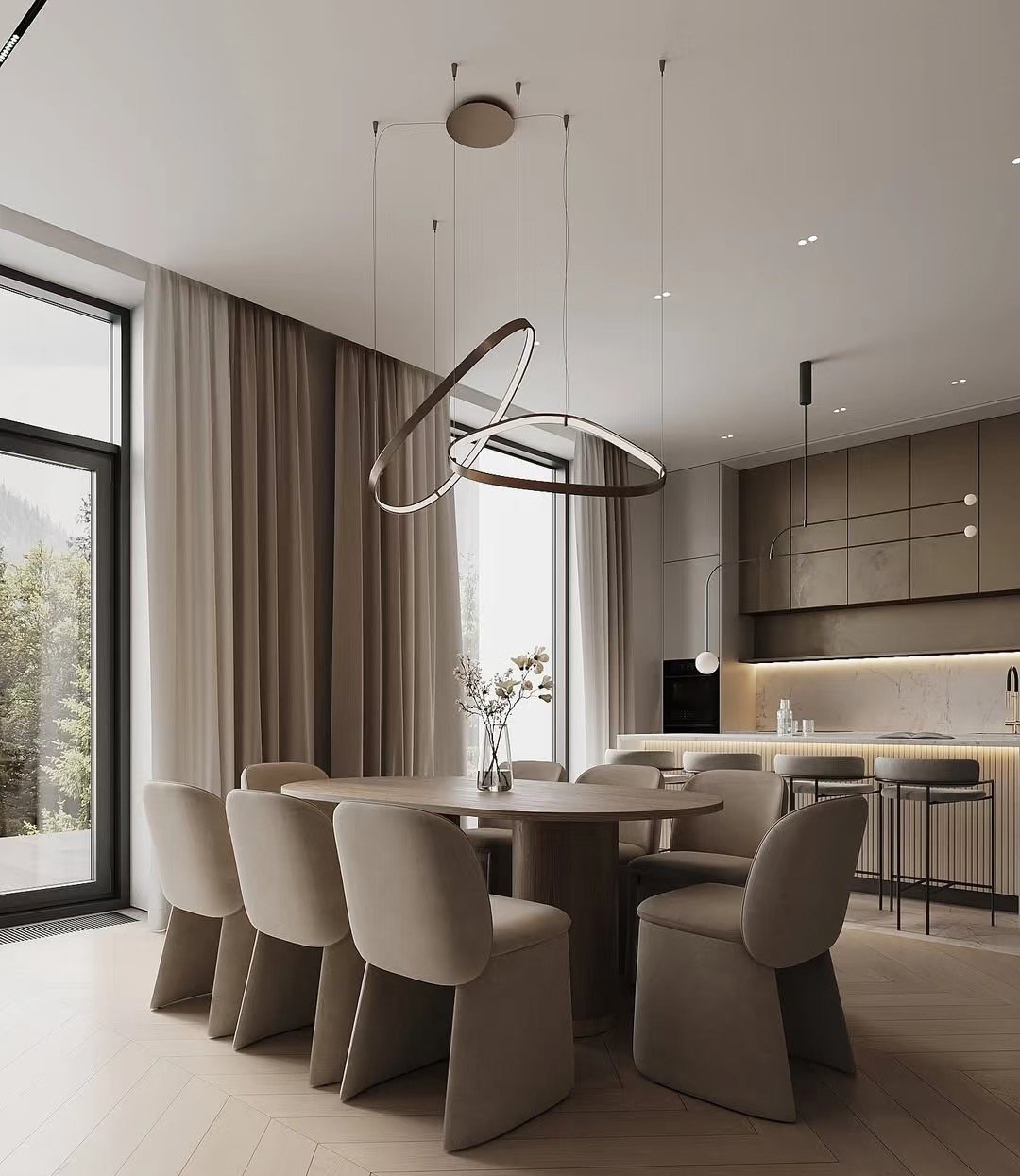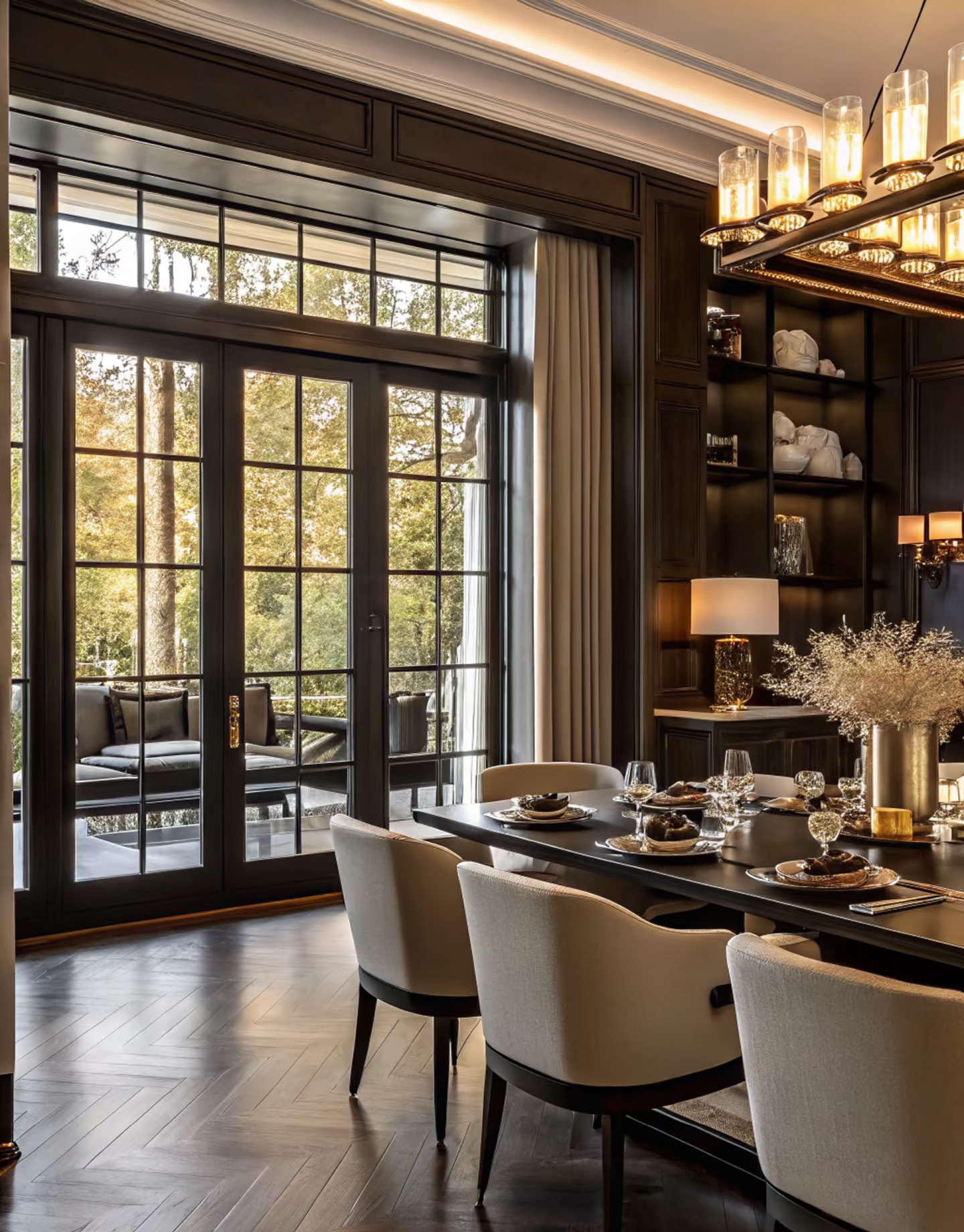In architectural design and home decoration, doors and windows are not only functional components, but also the finishing touch of the space style. The appropriate color matching of doors and windows can inject soul into commercial space and home environment, creating a unique and ideal spatial atmosphere.
1. Commercial space: convey brand and efficiency through color
For office buildings, shopping malls and other commercial spaces, the color of doors and windows must be consistent with the brand tone and space functions.
In office buildings, simple and atmospheric neutral tones are the mainstream choice. Such as silver-gray and dark-gray doors and windows, paired with glass materials, can show a professional and calm business temperament and bring a sense of reliability to customers and employees. At the same time, these low-saturation colors are not easy to go out of date and are suitable for long-term use, reducing the cost of later renovation.
Retail spaces such as shopping malls pay more attention to the attractiveness and guidance of colors.
Bright and warm-toned doors and windows, such as orange and yellow, can create a lively and enthusiastic shopping atmosphere and stimulate consumers' desire to buy. For high-end brand stores, black and gold can be used to highlight luxurious colors, and exquisite metal lines can be used to highlight the brand's high-end positioning and enhance consumers' sense of brand identity.
In addition, in B-end projects in public service categories such as education and medical care, the colors of doors and windows should be mainly comfortable and relaxed. The doors and windows of cool colors such as light blue and light green can convey a sense of tranquility and peace, helping to create an environmental atmosphere suitable for learning and recovery.


2. Home space: Use colors to outline the mood of life
The color matching of doors and windows in home space emphasizes personalization and emotional expression.
In modern and simple style homes, white and beige doors and windows are classic choices. These light-colored doors and windows can be integrated with various decoration styles to create a clean and transparent sense of space, making the room look more spacious and bright. Paired with light wood floors and gray fabric sofas, it can create a simple and warm living environment.
If you pursue European classical style, dark brown and dark red wooden doors and windows can show elegance and heaviness. These colors complement the decorative elements such as carvings and Roman columns. They are paired with golden hardware accessories to instantly enhance the luxury of the home, as if they are in a medieval aristocratic castle.
For owners who love natural style, green and wood-colored doors and windows can bring outdoor vitality into the indoors.
Green doors and windows are decorated with white walls and green plants to create a fresh and natural atmosphere; the wooden doors and windows are echoing the wooden furniture, conveying a warm and simple atmosphere of life, allowing people to feel the tranquility and beauty of nature at home.
The color matching of doors and windows in children's rooms should be full of childlike fun.
Bright colors such as pink, blue, and yellow can stimulate children's imagination and creativity. You can also draw cartoon patterns on doors and windows, such as stars, moons, small animals, etc., to create a dreamy growth space for children.


3. General principles of color matching
Whether it is the B-end or C-end, the color matching of doors and windows must follow some common principles.
First, the lighting conditions of the space must be considered. Spaces with insufficient lighting are suitable for choosing light-colored doors and windows to reflect light and increase indoor brightness; spaces with sufficient lighting are bold to try dark-colored doors and windows to create a calm and quiet atmosphere.
Secondly, the colors of doors and windows should be coordinated and unified with other decorative elements such as walls, floors, furniture, etc. You can use the same color combination to create a harmonious and unified visual effect; you can also try contrasting color combinations, such as black doors and windows paired with white walls, forming a strong visual impact and creating a distinctive spatial style, but pay attention to the color proportions to avoid being too messy.
Finally, when choosing the color of doors and windows, you must also consider your personal preferences and cultural background. Different colors have different meanings in different cultures. Only by choosing colors that conform to your own cultural identity and personal aesthetics can you truly create a satisfactory ideal space.








